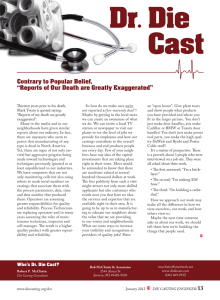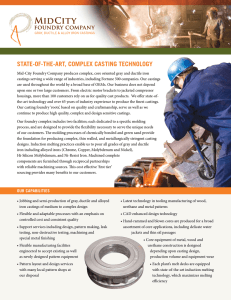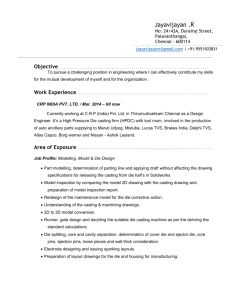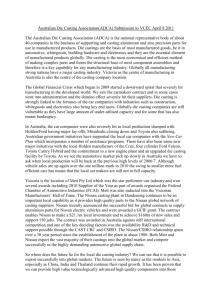Chapter 2
advertisement
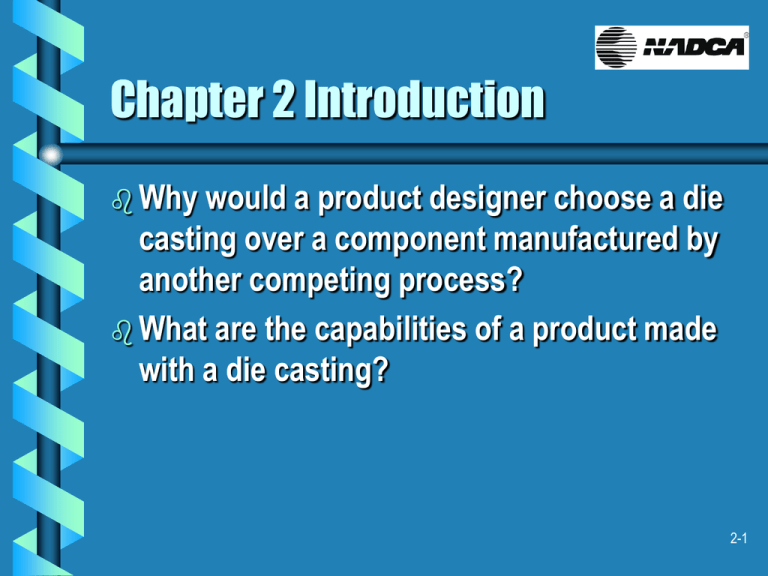
Chapter 2 Introduction Why would a product designer choose a die casting over a component manufactured by another competing process? What are the capabilities of a product made with a die casting? 2-1 Chapter 2 Objectives List the advantages of using die castings Identify die casting applications List the characteristics of the optimum die casting configuration Identify the components of the die casting shot 2-2 New Terms Die casting “shot” EMI Overflows Runner Sprue 2-3 Die Casting Advantage Produces components at high speed Uses a range of durable metal alloys Faithfully captures the most intricate design details So, it’s the choice for: • High volume production components • Lower-volume production as well 2-4 Die Casting Applications Agricultural machinery Automotive vehicles Building hardware Electrical and electronic equipment Hand tools Home appliances Industrial products Instrumentation Lawn and garden equipment Office furniture Office machines Portable power tools Recreational equipment 2-5 Optimum Configuration Fill completely with metal Solidify quickly without defects Eject readily from the die 2-6 Principle 1 Wall thickness should be as consistent as possible • • • • • No hard and fast rules Wall section possesses a dense fine-grained skin Defects likely in material in between walls Wall sections should be as uniform as possible. Thinner walls contribute a lesser heat load than heavier walls and will have a longer die life 2-7 Principle 2 Intersections of walls, ribs and gussets should blend with transitions and generous radii • Generous radii and transitions promote metal flow and internal integrity • Radii and fillets enhance structural integrity • Fillets reduce heat concentration in both the die and castings 2-8 Principle 3 Specify standard draft • Draft is highly desirable on surfaces parallel to the direction of die draw • Recommended draft is determined by: – The alloy – The length of the dimension parallel to the die draw – If the dimension is an inside or outside wall 2-9 Principles 4 and 5 Eliminate or minimize sharp corners • Accommodate them at parting lines and at the junctions of die components • Break them with radii or chamfers Avoid undercuts • May require machining operations or additional die components, such as retractable core slides 2-10 Principle 6 Dimensions with critical tolerances should relate to only one die member • Precision is greatest when related features are in same piece of cavity steel • Precision is reduced for relationships across the parting line or to moving components • Judicious use of ribbing can aid die filling and strengthen the component 2-11 The Shot The result of injecting metal into the die, i.e., making a shot (verb), is also called a shot (noun) Shot elements: • • • • Runner Biscuit Overflows (not pictured) Casting 2-12 Overflow A reservoir for the first metal to flow through the cavity Vents inside provide a path for air to get out of the die • A strategically placed overflow can be used to add heat in a cold area of the die May help eject the casting from the die 2-13 Summary Many reasons to choose die casting over a competing process Many product lines made from die castings 6 principles must be followed to ensure optimum design 2-14

